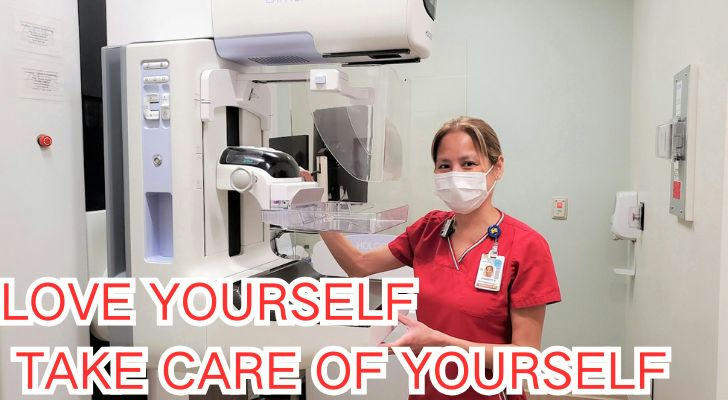Ensuring Women's Health: Accessible Mammograms Across the U.S
Breast cancer remains one of the most common cancers among American women, with 1 in 8 women developing it in their lifetime. Early detection through mammograms (breast X-rays) significantly improves survival rates—yet many women still face barriers to screening.
Fortunately, the U.S. offers multiple programs to make mammograms affordable, convenient, some are even public welfare services.

Why Mammograms Matter
A mammogram can detect breast cancer years before symptoms appear, when treatment is most effective. The American Cancer Society recommends:
- Women aged 40–44: Optional yearly screenings.
- Women 45–54: Annual mammograms.
- Women 55+: Switch to biennial or continue yearly.
High-risk individuals (family history, genetic factors) may need earlier or more frequent screenings.
Lifetime Risk of Breast Cancer (by Age Group)
| Age Range | 10-Year Risk | Lifetime Risk (up to current age) |
|---|---|---|
| Ages 40-44 | ~1.5% (1 in 67) | ~1.9% (1 in 53) |
| Ages 45-49 | ~2.4% (1 in 42) | ~2.8% (1 in 36) |
| Ages 50-54 | ~3.0% (1 in 33) | ~4.1% (1 in 24) |
| Ages 55-59 | ~3.6% (1 in 28) | ~5.3% (1 in 19) |
| Ages 60-64 | ~4.1% (1 in 24) | ~6.8% (1 in 15) |
| Ages 65-69 | ~4.5% (1 in 22) | ~8.3% (1 in 12) |
| Ages 70-74 | ~4.8% (1 in 21) | ~9.6% (1 in 10) |
| Ages 75-79 | ~4.9% (1 in 20) | ~10.7% (1 in 9) |
| Ages 80+ | ~5.0% (1 in 20) | ~12.4% (1 in 8) |
Charity Activities or Low-Cost Mammogram Programs
National Breast and Cervical Cancer Early Detection Program (NBCCEDP)
Supported by the CDC, this program provides charitable services or low-cost mammograms to uninsured, underinsured, and low-income women. Over 500,000 screenings are conducted annually—check eligibility via your state health department.
Planned Parenthood
Many locations offer sliding-scale mammograms and referrals to affordable imaging centers.
Mobile Mammography Vans
Hospitals and nonprofits like Susan G. Komen deploy mobile units to rural and underserved areas, bringing screenings directly to communities. Search "Local Mobile Mammography" for local options.
Health Insurance Coverage
Under the Affordable Care Act (ACA), most insurers must cover mammograms and the co-payments are significantly reduced. Medicare and Medicaid also include screening benefits.
How to find local services
Online Tools: Use the CDC's NBCCEDP locator or Komen's screening directory.
Local Clinics: Federally Qualified Health Centers (FQHCs) often provide subsidized care.
Community Events: Health fairs and awareness months (e.g., October's Breast Cancer Awareness Month) frequently offer Public benefit screenings.
Local hospitals: National Breast Cancer Foundation (NBCF) works with hospitals across the country to provide mammograms to women who meet income and insurance requirements.
For example:
Arkansas Cancer Coalition
Forge Survivorship Center
St. Joseph's Hospital and Medical Center
More hospital lists
🎯 How Does it Work in Practice?
Step 1: Determine Eligibility
- Insurance status & finances: If uninsured or financially strained, NBCCEDP or state Medicaid-based programs may apply.
- Insured women:Under the ACA and Medicare, mammograms are reimbursed every year or every two years starting at age 40.
Step 2: Locate a Provider
Use the CDC's "Find a Screening Program" tool to locate NBCCEDP providers in your state
Explore non-profit partner clinics via NBCF or Komen, and look for mobile mammography events nationalbreastcancer.org
Step 3: Schedule and Access Support
Call your local health department, clinic, or CDC hotline (1-800-232-4636).
Step 4: Undergo Imaging & Follow Up
If a screening test shows something suspicious, diagnostic imaging (ultrasound, diagnostic mammogram, biopsy) may be required. Federally and non-profit support often covers these follow-up tests too.

Overcoming Screening Fears
Some women avoid mammograms due to:
- Cost: Utilize the programs above—many cover 90% of fees.
- Discomfort: Modern 3D mammography reduces pressure and improves accuracy.
- Time: Mobile units and extended clinic hours ease scheduling.
Real case
After losing her job and health insurance, 47-year-old Maria from Texas discovered a public benefit mobile mammography clinic through a local nonprofit. The screening detected early-stage breast cancer, and she received treatment through a state-supported program—saving her life.
Spread the word: Share this information with mothers, sisters, and friends.
Get screened early, stay healthy, and take control of your own happiness!
